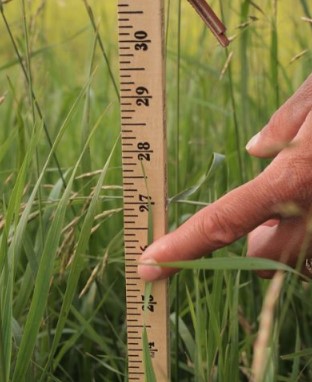By Nick Simmons
Here in the Southeastern United States we are fortunate to have adequate conditions to grow quality forages for livestock production. Adequate management can also allow for producers to grow a desired quantity of forages that can be used in various ways, such as stockpiled grazing, hay, baleage, etc. Utilizing our forages to their full potential is vitally important to cut costs of supplementation. Proper management practices help us realize our forages’ potential and can also improve soil health and integrity. Forage management practices can vary depending on time of year, established or newly planted pastures, and the ultimate use of the forages. In general, all forms of forage need to have a plan to best manage for production, but for summer and winter annual pastures, extra attention to timing can be valuable for longer, more sustained use.
I want to emphasize the point of “timing” as it relates to annual forage pasture management. In general, you’re starting a new pasture from scratch, so the potential of the production can be impaired or enhanced based on management decisions. Timing of planting can play a major role in how quickly you’re able to utilize the pasture and how well the stand will hold up to decreased temperatures (for winter annuals) or periods of drought (summer annuals). In on-farm demonstration trials in 2018, we observed almost 70% reduction in actual production of similar forages planted in December, as compared to those planted in October and November. We also observed much higher weed pressure and quality decreases in later planted plots. It’s important to understand that not only does the plant need time to develop above the ground, but also time to establish a viable root system underground. This is especially important for the first time that we turn our animals out to graze. You want to ensure that the root structure can withstand the pressure of grazing. Producers also need to understand when to pull cattle off in a rotational grazing system.

One of the tools that we encourage producers to use is simply called the “Pasture Stick.” This is usually a yard stick that has various sets of lines and information on all four sides. There are many adaptations of the pasture stick through universities and private agricultural companies, but in general the same information is listed. The following information can be found on most versions: grazing heights, when to rotate animals, pasture growth rates, planting rates and others. Although very simple in design, the pasture stick can provide key information for producers to use to make decisions to increase and/or prolong the production of the forages.
Source : ufl.edu